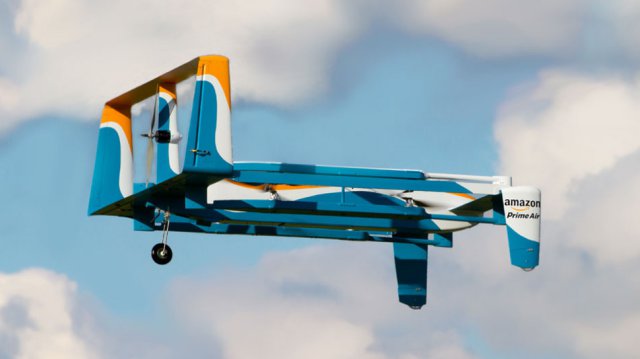 When Amazon eventually starts delivering items via drone, the company wants the option to land its unmanned aircrafts on trucks or buses for a portion of the journey, a filing with the U.S. Patent and Trademark Office shows.
When Amazon eventually starts delivering items via drone, the company wants the option to land its unmanned aircrafts on trucks or buses for a portion of the journey, a filing with the U.S. Patent and Trademark Office shows.
The application, filed by executives with Amazon’s Prime Air division in March 2015 and published Thursday, seeks to allow drones to hitch rides to get closer to their delivery destinations or return from completed deliveries. Doing this would conserve energy and give drone personnel options for emergency landings if problems with the aircrafts occur.
To make this work, Amazon suggests it could forge agreements with transportation agencies and shipping companies that could include compensation in exchange for permission to land drones on vehicles. Drones could use identifying markings and GPS coordinates to find vehicles to land on.
Amazon suggests that the company would send a message to a driver or transportation system when it wants to land a drone on a vehicle. That would allow the driver to give permission for the landing, prepare for it and confirm that the drone successfully docked with the vehicle. If a drone’s battery is about to die or some other malfunction occurs, the company would plan for the aircraft to land on the first available vehicle, and then Amazon personnel could set up a meeting with the driver to retrieve it at a set location.
Under this system, Amazon would create a database of vehicles it has landing agreements with. That would be used to identify routes and keep track of routes for possible drone landings. If Amazon knows a specific vehicle is going to be at a certain place at a selected time, the company can choose to send drones to meet those vehicles at the right spot.
Amazon would consider a variety of factors when deciding whether or not to land a drone on an eligible vehicle, including: vehicle travel path in relation to the package destination; timing of routes versus delivery timeframe; and travel speed of possible landing vehicles.
Source: GeekWire
